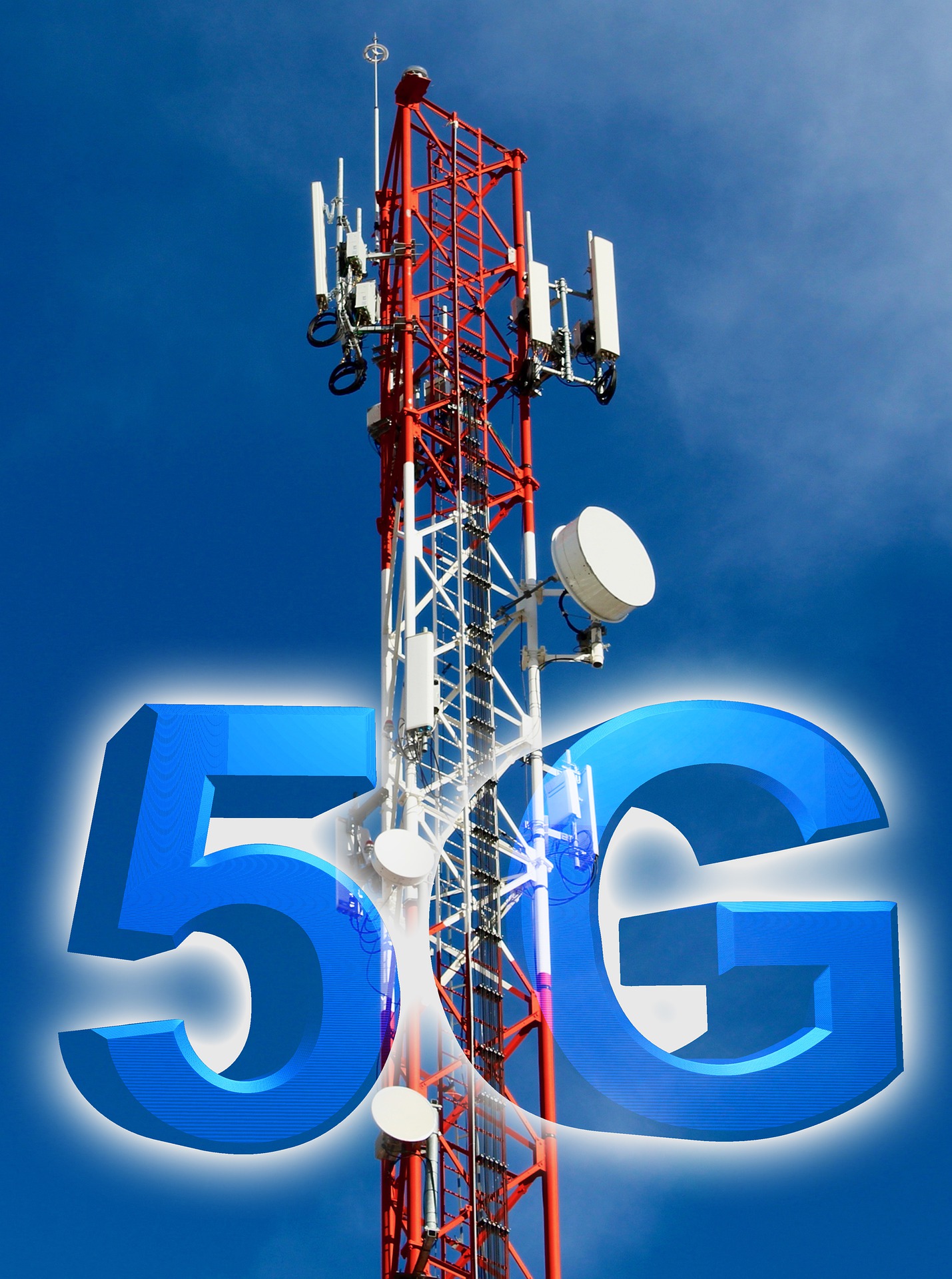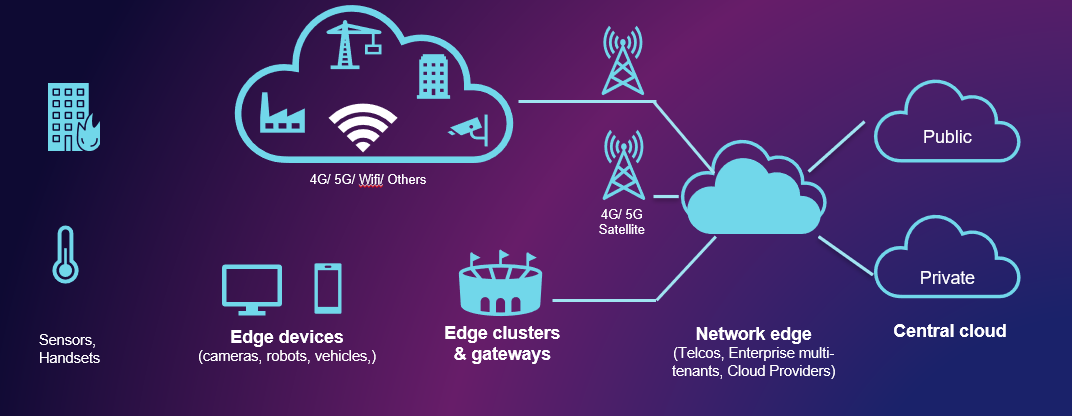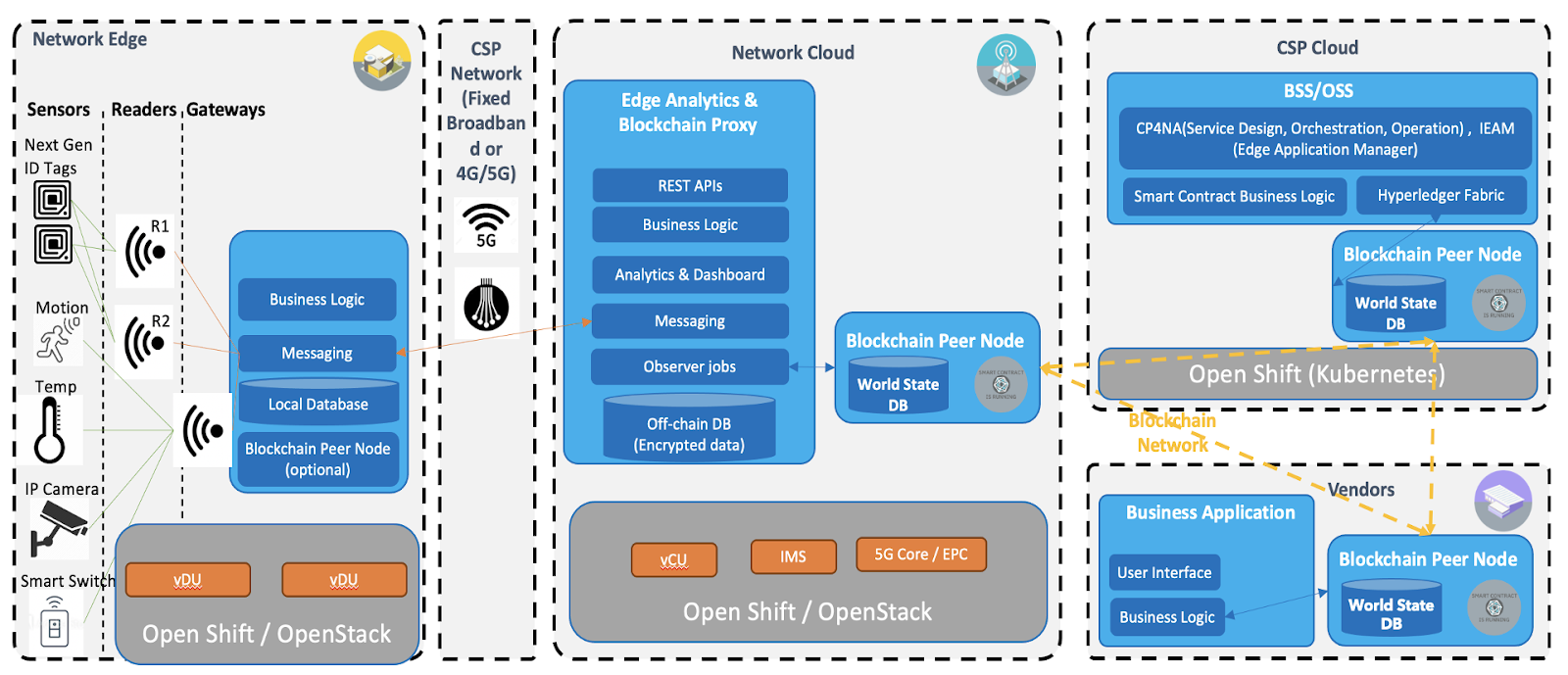
Transformation of industries by building next generation 5G Ecosystem platforms is a huge addressable market to the tune of over hundreds of billions of dollars and much more as businesses evolve. The market is growing at a rapid speed with double digit CAGR growth.
It is important to understand and clearly explain 5G and EDGE. What are they?
5G is the next generation of mobile, wireless technology, which will dominate the 2020s.
- 5G is designed to provide faster mobile broadband, support billions of IoT devices and enable low latency and high reliability communications
- 5G will be deployed globally and will eventually make 3G obsolete.
- 5G will deploy in phases. New core deployments based on NFV, Cloud and Edge technologies have been initiated by carriers.
Edge Computing allows dynamic delivery and execution of computation to the most sensible parts of networks.
- Edge serves multiple use cases across industries. Prominent ones which are already taking advantage include industrial, telco, media, entertainment, consumer and oil & gas.
- Edge provides containerized compute resources with varying degrees of distance from consuming resources as well as varying latency, power and compute requirements.
- Edge can function both with and without connectivity.
Blockchain plays an important role in the rollout of 5G so let’s examine the 5G landscape to understand where blockchain fits in.
5G landscape
The diagram below provides a high-level overview of the 5G ecosystem:

The following are some of the key components that form the edge ecosystem:
- Cloud: This could be a public or private cloud, which can be a repository for the media container-based workloads including applications and machine learning models. These clouds also host and run the applications that are used to orchestrate and manage the different edge nodes.
- Network edge: This is generally part of the Communication Service Providers (CSP) core network and can host larger edge applications and data.
- Edge cluster/gateway: An edge cluster/gateway is a multi-edge compute node that is located in a remote operations facility such as a factory, retail store, hotel, distribution centre, or bank. An edge cluster/gateway is typically constructed with racked computers, enterprise application workloads and shared services.
- Edge device: An edge device is a special-purpose piece of equipment that also has compute capacity integrated into that device. Edge devices include an assembly machine on a factory floor, an ATM, an intelligent camera, or an automobile.
There are multiple entities that need to partner in this ecosystem such as providers of the containers at the application and network level, managers of the end-to-end network and suppliers of the infrastructure from the underlying hardware to the software infrastructure. SLA’s need to be met, issues resolved quickly and upgrades implemented in a timely manner. Such collaboration is an ideal environment for blockchain to be used to improve transparency, traceability and security across the different partners.
We will now look at specific use cases to better understand where blockchain fits into this ecosystem.
Use cases
There are multiple use cases that can benefit from 5G, including the following:
- Spectrum management: Managing spectrum is important for 5G, and using blockchain provides multiple benefits. Blockchain eliminates the need of trusted external authorities such as spectrum licenses and band managers. Transparency is increased since all spectrum transactions are recorded on blockchain ledgers. The blockchain consensus mechanism ensures the reliability of the spectrum services and immutability ensures accuracy of the data.
- Infrastructure management: 5G networks construction requires a huge capital investment. Compared with 4G networks, 5G needs more than 5 times as many base stations. The operating cost of 5G will also be high because each 5G base station’s power consumption is 2.5-4 times higher than the 4G base station. Building this infrastructure means investment needs to be found, leases need to be created, services need to be evaluated, settlements need to happen across parties and then the actual building of the infrastructure. Blockchain is an ideal tool to ensure the collaborators can work together to implement the 5G network.
- Slice management: Network slicing is an important part of 5G as it enables a single network to provide different amounts of resources to different types of traffic so important traffic can be allocated greater bandwidth. To do this, multiple components in the network, such as the 5G core, vRAN and transport layer from multiple vendors, support the creation of the slice and appropriate SLA’s are met. Blockchain provides the immutability, transparency and security needed so that these different parties can create and manage the slice.
- Industry-specific use cases: There are multiple 5G industry use cases that will function more effectively supported by blockchain. For example, a worker safety system that ensures workers are safe in an environment and alerted when exposed to a dangerous substance with possible recommendations on next steps will have components running on the edge, network core and cloud. Edge applications need to respond as soon as the danger is identified while network slices may be created to ensure there is appropriate bandwidth assigned to communications for first responders and those in danger. Ensuring such a system operates effectively requires multiple parties to collaborate effectively in a 5G environment, and blockchain plays an important role in making this possible.
Implementing many of the 5G use cases requires effective management of the network functions. We will now provide an architectural overview of how the software defined network functions can be managed.
Hyperledger Fabric for 5G and Edge network function management, auditing, and inventory/certificate management
The process to manage the lifecycle of 5G network functions for the provisioning of end-to-end services can be quite complex, involving multiple parties and components including physical and virtual products. Hyperledger Fabric is a powerful tool that can be used to manage provenance on many aspects of network workloads and provide new value-added services, such as dynamic pricing and enhanced security, with full visibility into the supply chain for all concerned parties.
Below is a solution architecture for application of Hyperledger Fabric for 5G network and Edge lifecycle management of the network functions:

Some of the key functionality that Hyperledger Fabric will provide in the 5G and Edge network ecosystem play include:
- Smart contract to handle the license agreements and intelligent SLA management between service providers, xNF vendors, equipment providers and application vendors. This can also help to manage the licensing process where the nature of licenses can be very different for each vendor, but the key components could be made uniform to make the on-boarding easier.
- Management and tracking of service / xNF certification process of import transactions from CI/CD process that affects multiple parties like xNF vendors, system integrators, cloud providers.
- Asset tracking of xNF artifacts and license keys managed by blockchain as assets to keep track of version updates, assignment to deployments and their utilization. This enables transparent visibility to all involved parties and also helps with billing and settlement.
- License validation throughout lifecycle events of xNFs such as install, heal, scale and migrate. This capability also integrates with operations and lifecycle management of network services based on these xNFs.
- Smart contract to efficiently manage the assignment of licenses to different instance deployments between different customers. This goes towards cost and revenue management.
Next steps
As clients embark on the 5G and EDGE journey integrated with blockchain, it is important to mitigate challenges by following the right steps and processes to create a 5G-enabled ecosystem platform. Keys to success includes
- Having the right people and mindset: Building a team of experts using right combination of skills which include industry experts, digital strategists, IoT specialists, blockchain platform SMEs, data scientists and process specialists
- Effectively applying 5G enabled technologies: Building a catalog of workflows powered by leading technologies such as AI, automation, AR/VR, EDGE analytics
- Embracing new ways of working: Taking advantage of enterprise design thinking, virtual tools, distributed agile and industry best practices
- Leveraging local and global capabilities: Creating the best blockchain-enabled platform to ensure it can be scaled globally by building leading edge local and global ecosystems
{Note: For more on this topic, see the presentation Building Transformative Platforms to Scale 5G Ecosystems using Hyperledger from Hyperledger Global Forum 2021.}
